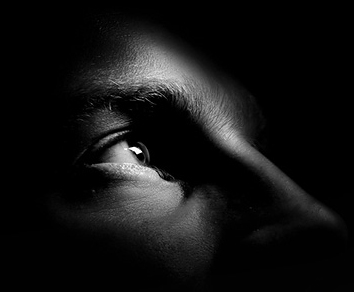

The Mineralogy Museum MINES ParisTech participated in the Prestige temporary exhibit during the Sainte-Marie-aux-Mines Mineral & Gem International show, from 22 to 25 June 2017. This yearly Prestige exhibit, offered by the organizers of the show and developed by Alain Martaud, had for theme this year: "Geodes and Fumerolles: the minerals of volcanism". To illustrate this theme, European museums and some private collectors have loaned some of their minerals. Thus, the Mineralogy Museum presented to the public about 50 minerals dispersed throughout this exhibition. Here we offer you to discover some showcases and some of our minerals highlighted during this Prestige exhibition. Alain Martaud, curator of the exhibit, provided us with the introductory text of the display, which we report here.
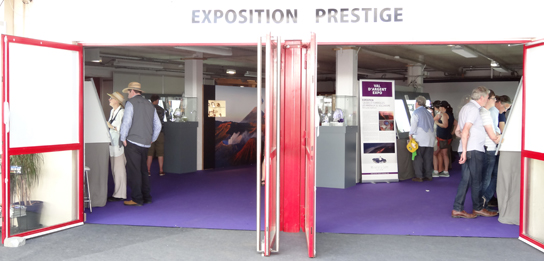
Volcanoes have always both fascinated and frightened men. Their destructive anger was at the origin of legends and myths from the Antiquity on. Logically they were among the first places visited and studied by naturalists from the end of the 17th century. Earth Sciences, originating in the 18th century, largely studied volcanoes accessible at the time and the rocks and minerals that they were made of. This exhibition will show witnesses of these first mineral species described at that time.
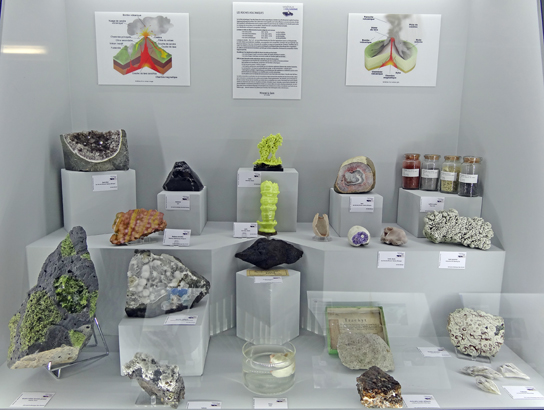
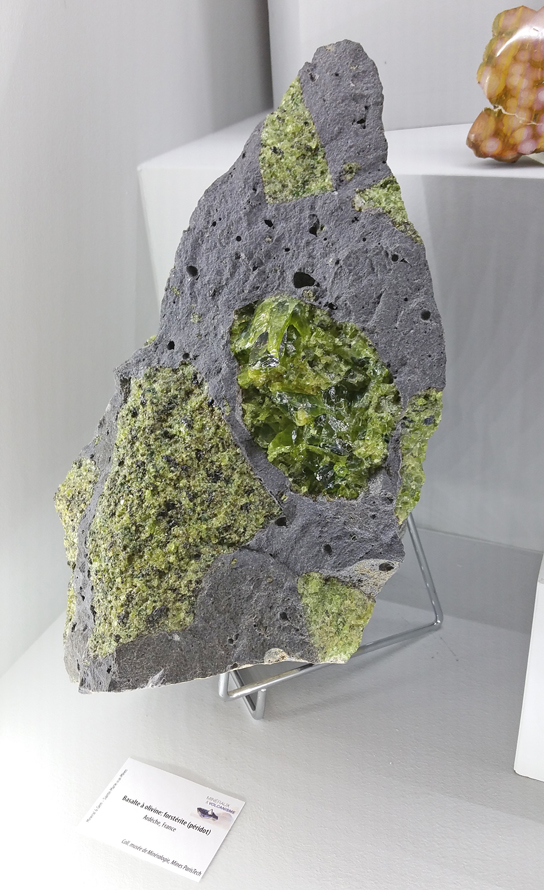
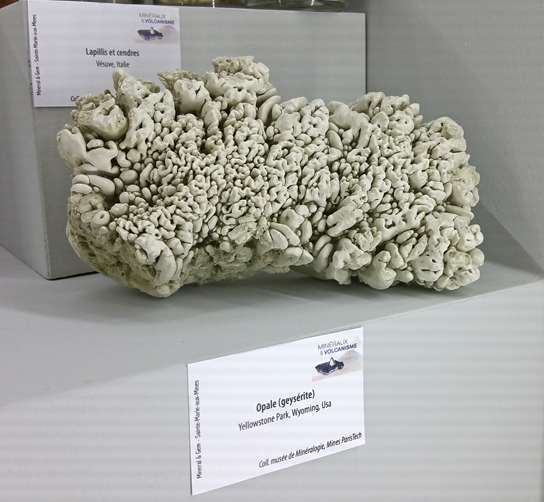
A volcano can be described as an assemblage of rocks resulting from terrestrial or underwater geological phenomena coming from the rise of a magma (melted rock) and its eruption on the surface. The eruption may be caused by lava emissions, gas explosions, ash projections or underwater explosions and flows. Volcanoes are of great interest to geologists but are not very well known to collectors of spectacular minerals. We will try to make you discover more by showing a wide variety of minerals directly derived from volcanism or which crystallized after the eruptions, thanks to secondary processes. This exhibit was made possible thanks to the participation of Mineralogy Museums from Paris, Strasbourg, Roma, and London. We shall see the extremely rich paragenesis - hundreds of mineral species - of the Italian volcanoes of Vesuvius and Lazio. Dozens of new species have been described there, beginning with the famous vesuvianite.
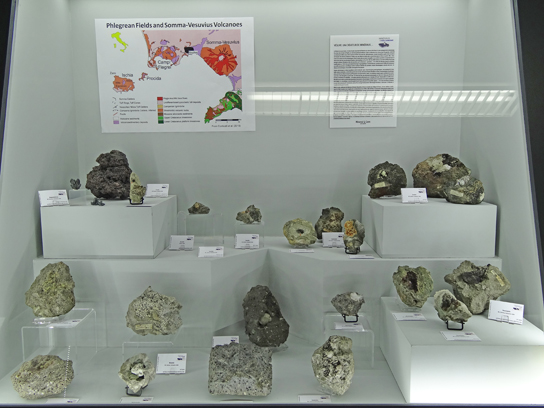
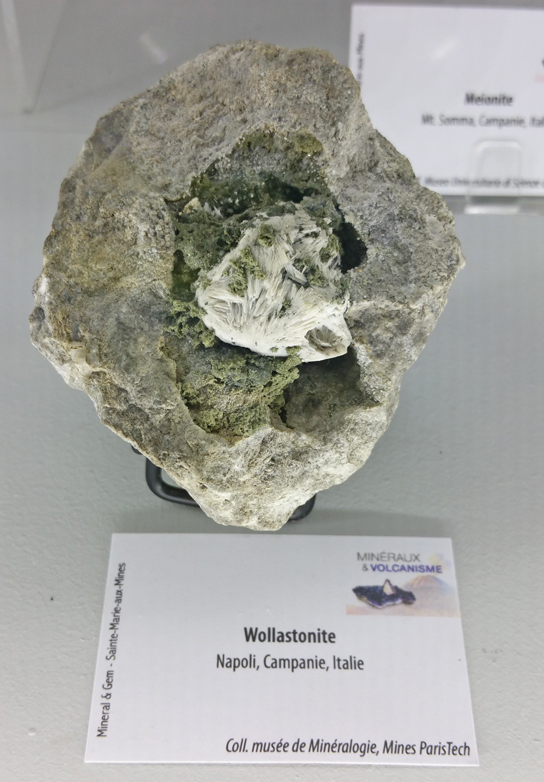
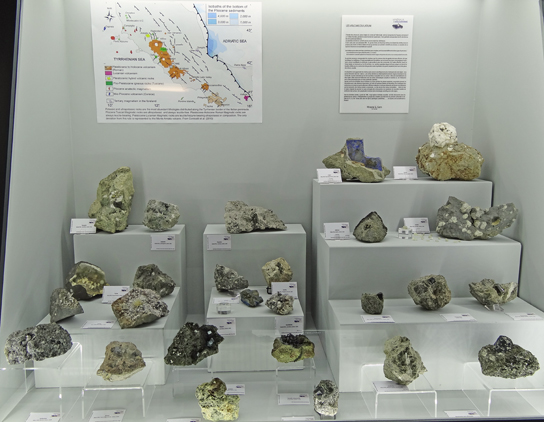
Basaltic flow often contain spherical cavities, which are in fact gas bubbles that have appeared during the cooling process. Sometimes these cavities have been filled afterwards by the action of some hot and mineralized fluids characteristic of the final phases of the volcanic eruption cycles. Typically, these are the geodes from the north of the Scotland to the Rio Grande do Sul on the border of Brazil and of Uruguay. These deposits offer the amazing showing of crystals of amethysts with zeolites or extraordinary crystals of calcites, comparable to crystal swords. Brazilian miners were kind enough to loan for the exhibit some spectacular examples of over a meter high, composed of crystals that resemble sumptuous sculptures. The inhabitants from the Bombay area in India mine many quarries of basalt that are full of extravagant minerals: zeolites! An incredible world to discover ...
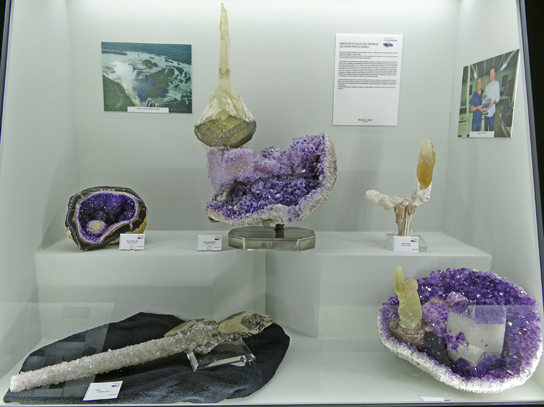
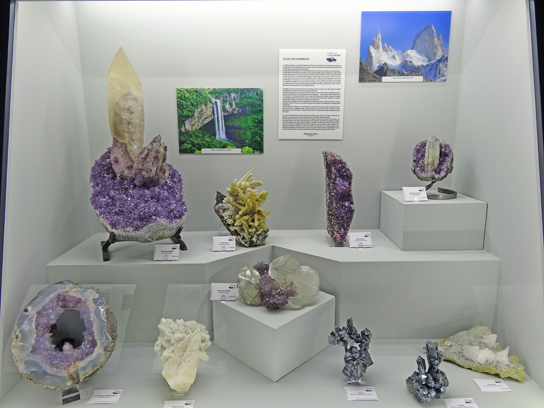
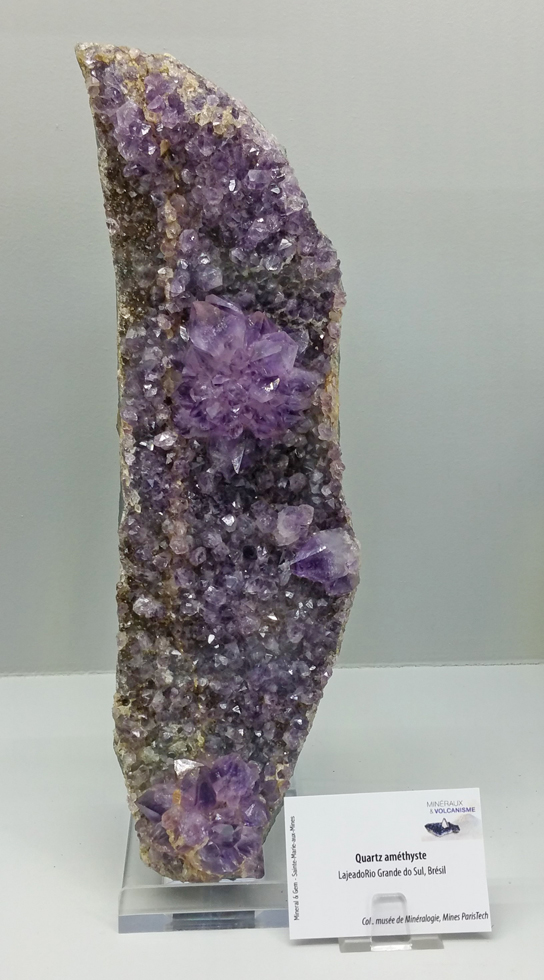
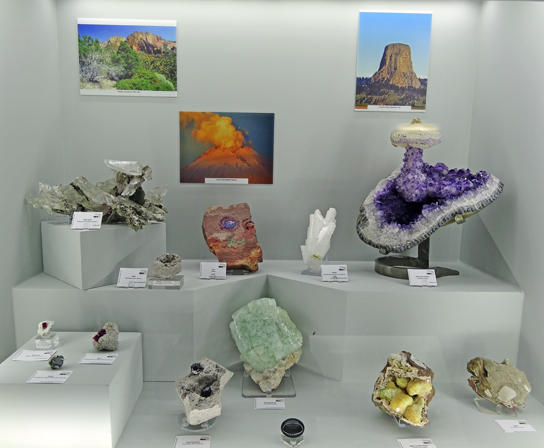
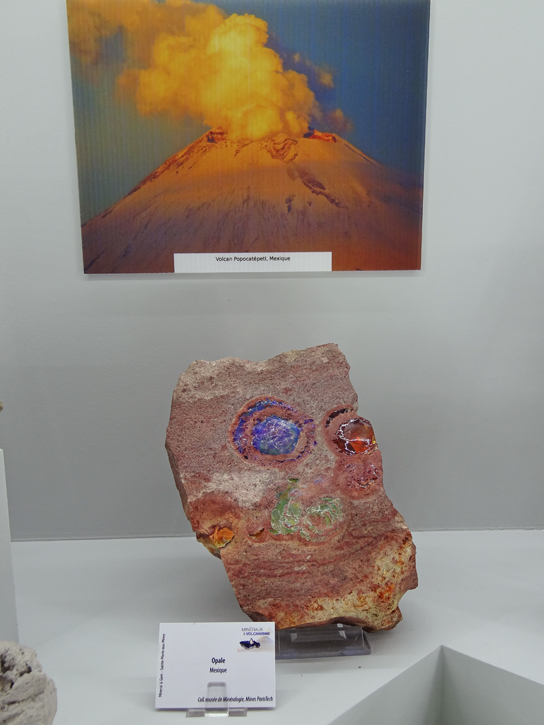
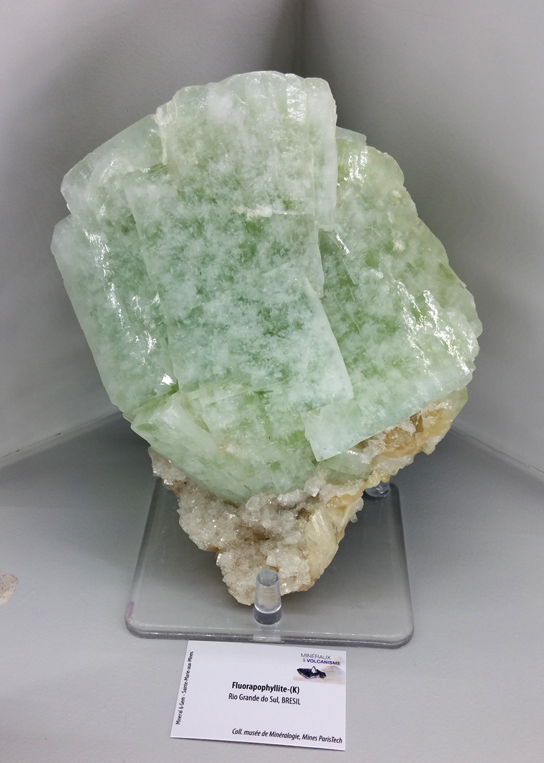
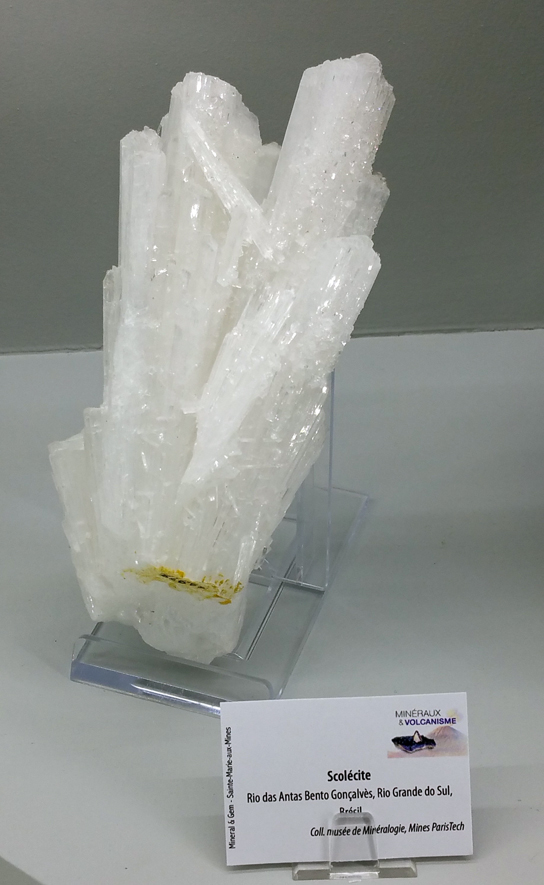
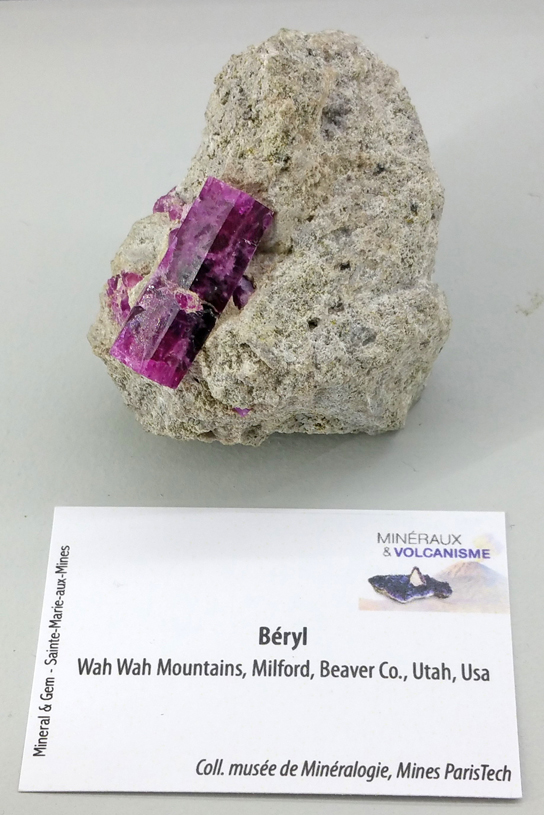
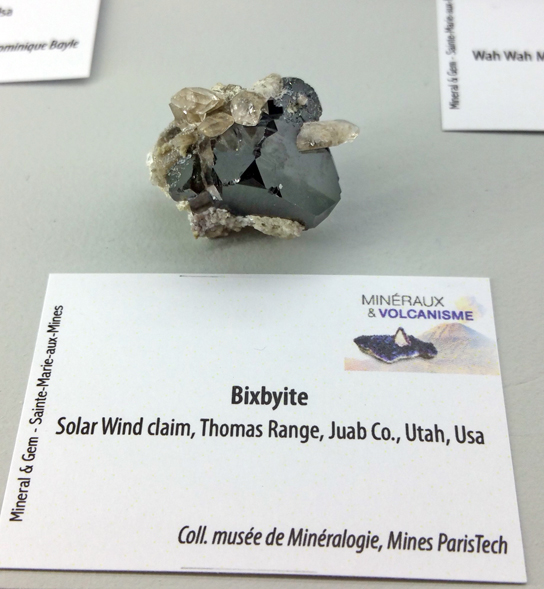
Other volcanic flows, of different chemical nature, are sometimes where one can discover agate nodules, such as the "lythophyses" of the Esterel in the south of France. Their delicate designs can be compared with those of the agates of Uruguay or those found in the 17th century in Idar-Oberstein, Germany, which are at the origin of a whole artisanal and artistic tradition of the work of gemstones and gems. If this charming German city is today the capital city of precious stones with artists of world-renowned talent, it is because they extracted amethysts and agates from a volcano.
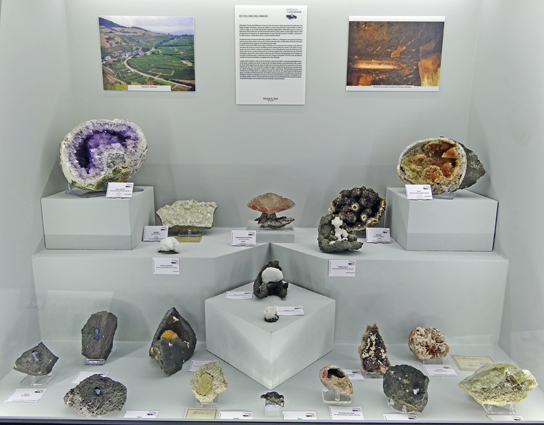
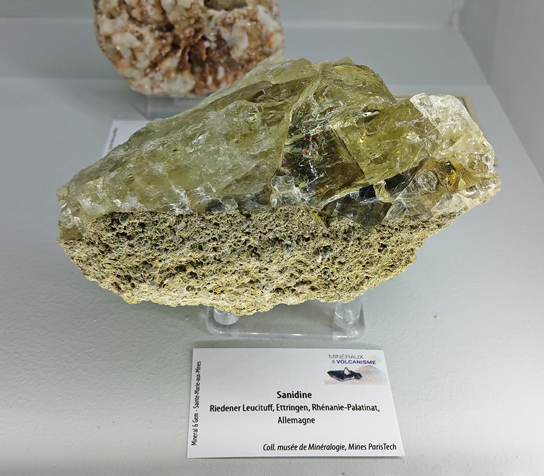
Agate, this variety of quartz that can show amazing natural drawings, was also a source of inspiration for the academician Roger Caillois. His collection was bequeathed to the National Museum of Natural History in Paris, which unveils for the occasion the treasures of its reserves. The Prestige exhibit also shows some molten objects reported in 1902 by Alfred Lacroix (professor of mineralogy at the museum) during a special mission following the eruption of Mount Pelee in the Martinique island.
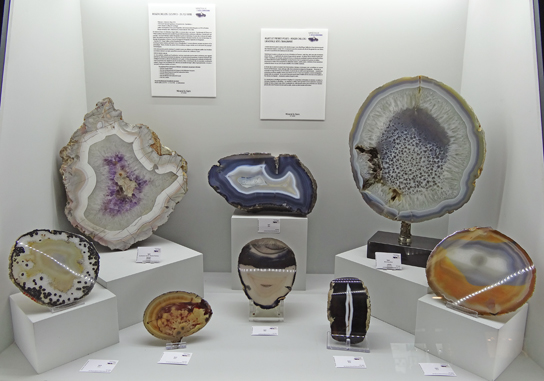
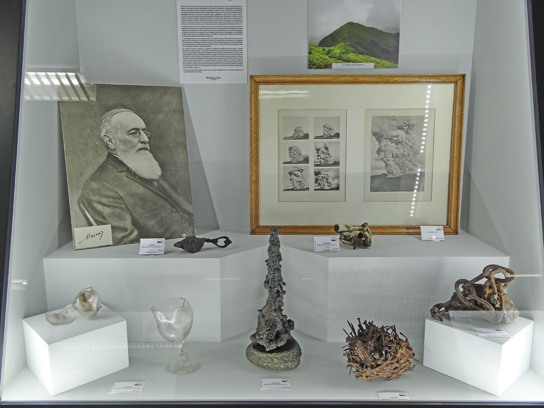
During the vertiginous rise of the magma towards the surface of the Earth's crust, it sometimes happens that it tears up pieces of rocks from deep inside the Earth. That is how in the heart of Auvergne, France, precious stones can be eventually found at the bottom of rivers. The Prestige exhibition presents the largest gathering ever made of these jewels from Auvergne, with red zircons and blue sapphires, on loan from different museums and private collectors.
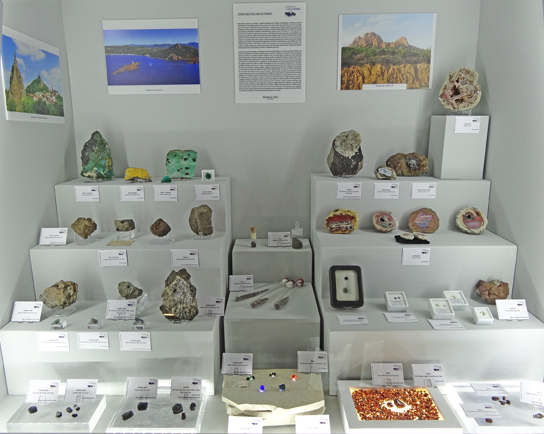
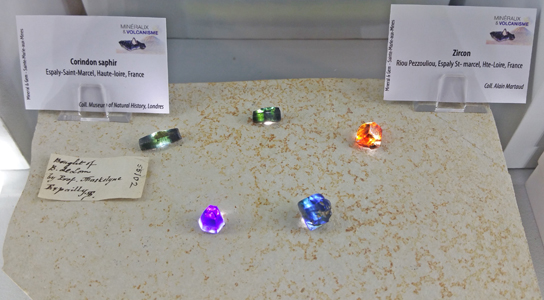
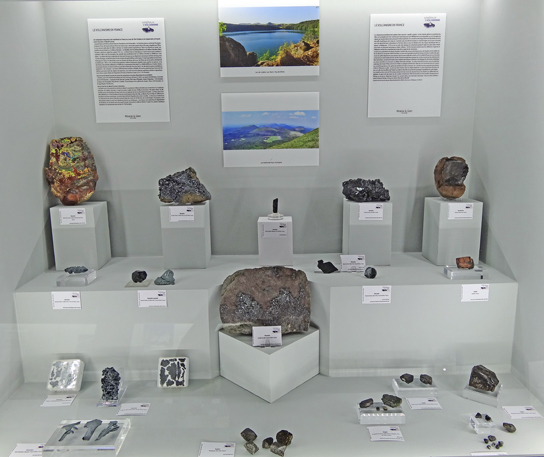
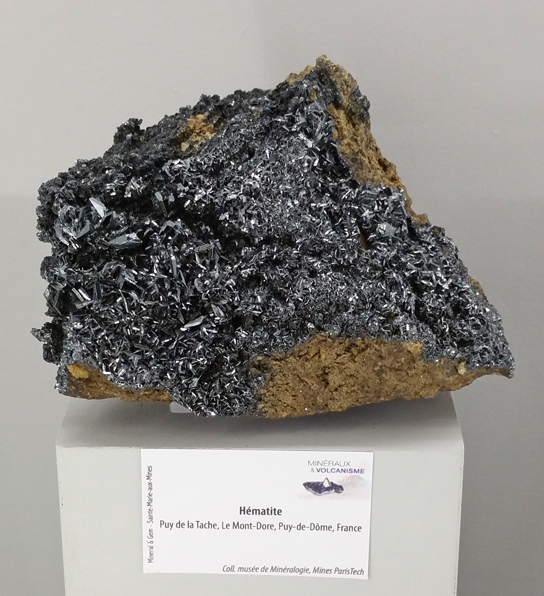
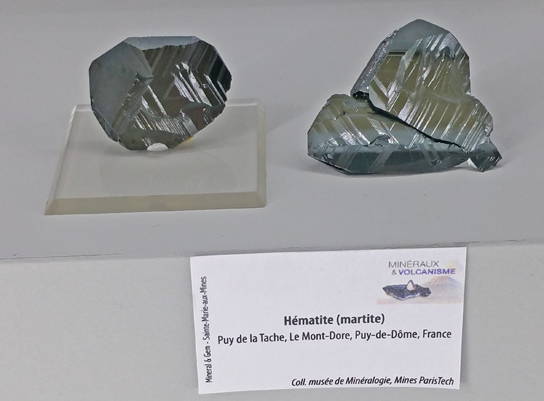
We also talk about some "exotic" volcanoes, from the South Atlantic to the South Pacific and even Antarctica, with some man-made objects in obsidian from the Easter Island or some anorthite crystals of Mount Erebus. Also presented is a fragment of a volcanic chimney called "black smoker", which still deposits metals in the ocean depths ... One of them was specifically taken during a dive of the Alvin submersible in the South Pacific in April 2017, and brought back for the Prestige exhibition with photos of its "mining" at over 2000 m depth in the ocean.
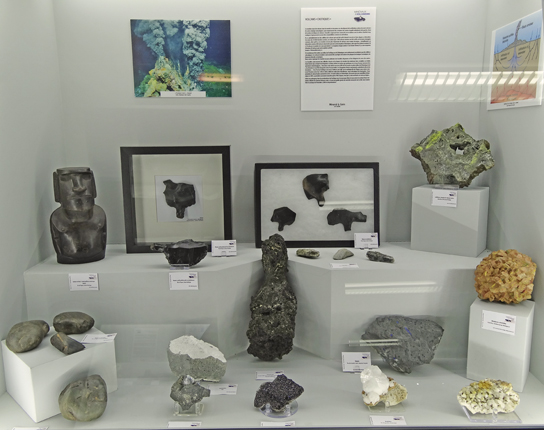
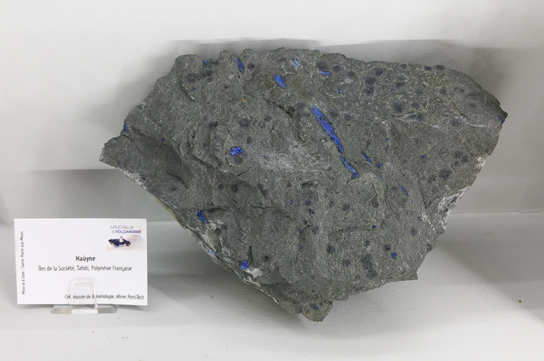 Detail of the display case for Exotic volcanoes, with a sample of haüyne in its basaltic matrix, coming from Tahiti, from the Mineralogy Museum MINES ParisTech. Photo E. Gaillou.
Detail of the display case for Exotic volcanoes, with a sample of haüyne in its basaltic matrix, coming from Tahiti, from the Mineralogy Museum MINES ParisTech. Photo E. Gaillou.
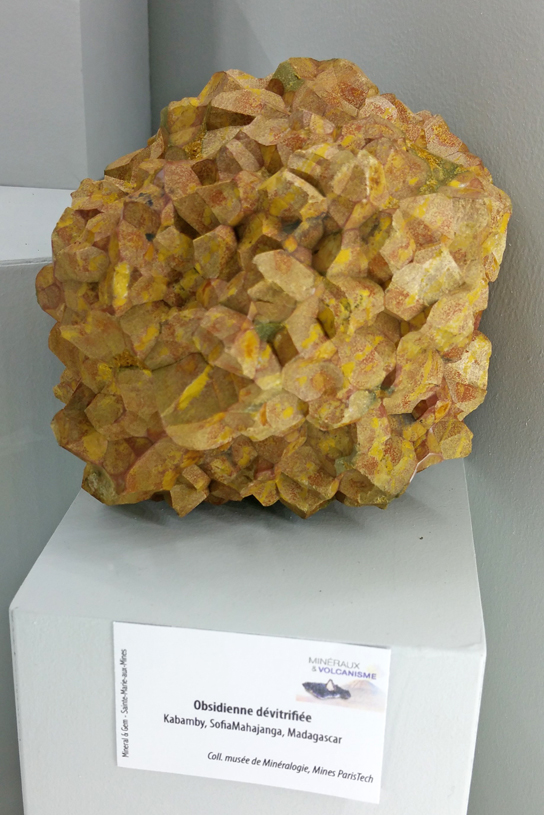
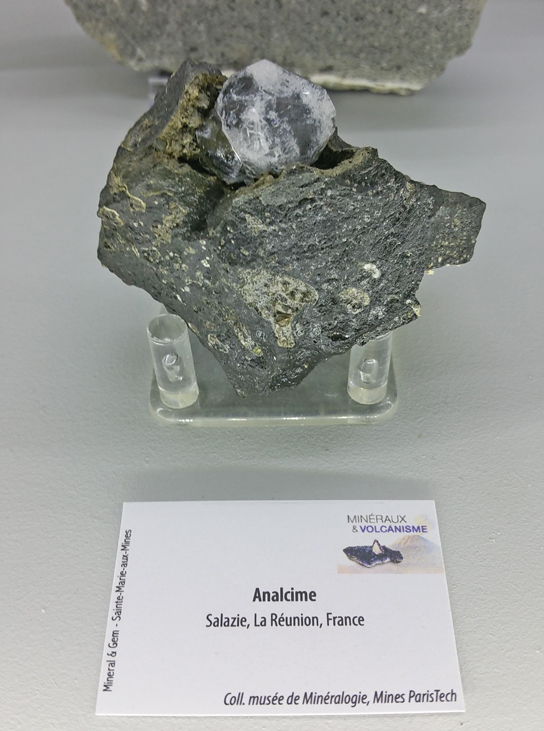
Here are a few of the wonders from Africa and America, that we offer you to discover with the Prestige exhibition "Geodes and fumerolles".
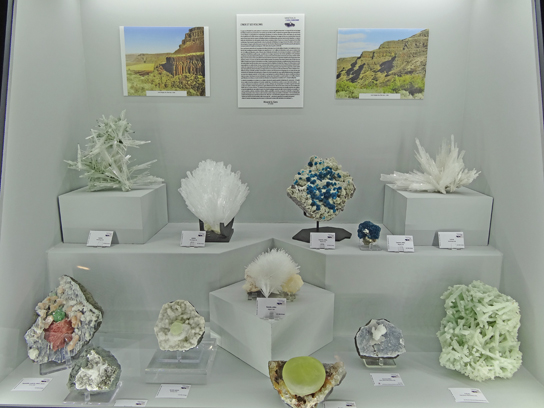
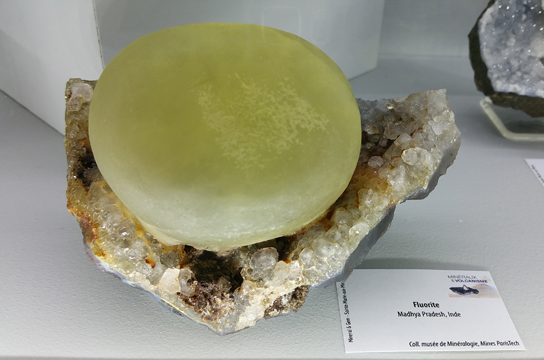
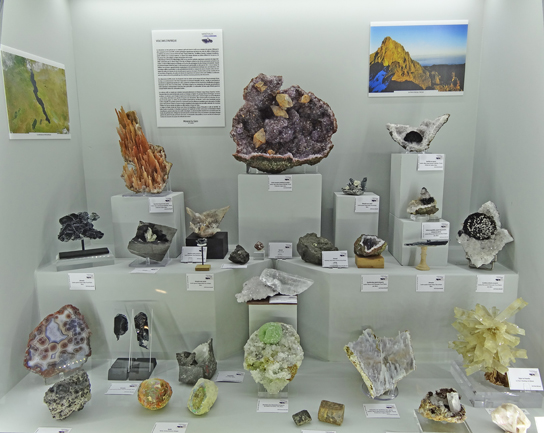
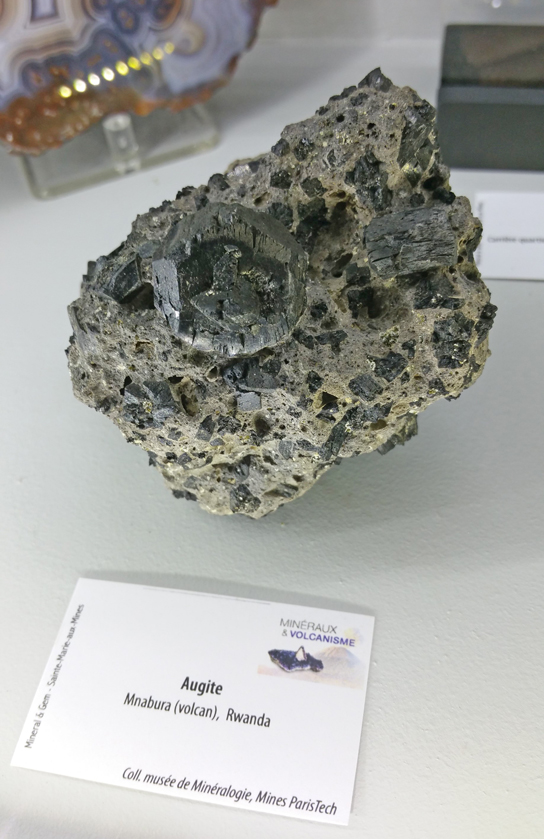 Augite from the volcano of Mnabura in Rwanda, presented in the display case of volcanic African minerals. Collection of the Mineralogy Museum MINES ParisTech, photo E. Gaillou.
Augite from the volcano of Mnabura in Rwanda, presented in the display case of volcanic African minerals. Collection of the Mineralogy Museum MINES ParisTech, photo E. Gaillou.
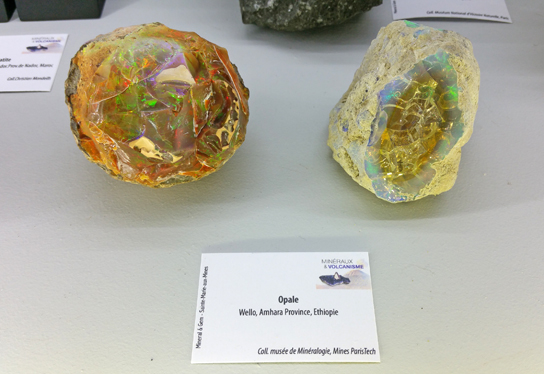
Before the Prestige exhibit could look the way it did, a lot of work was necessary! A few photos to thank all the people that participated.
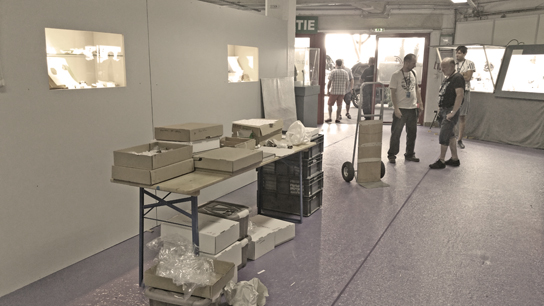
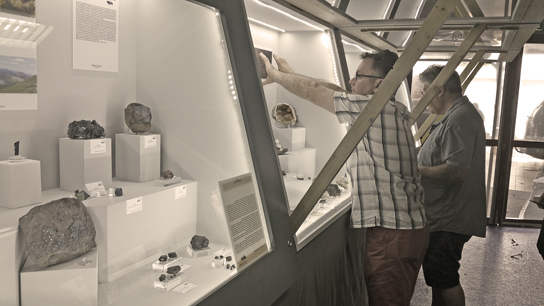
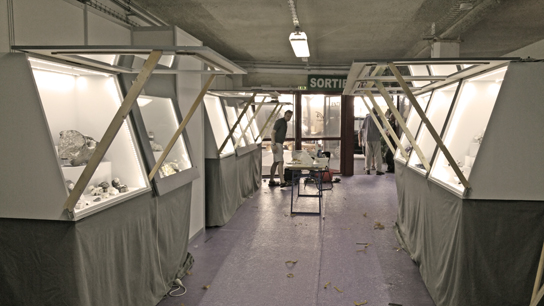
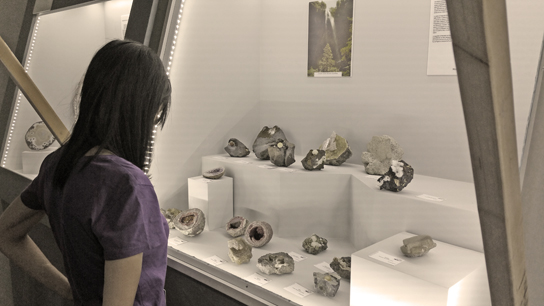
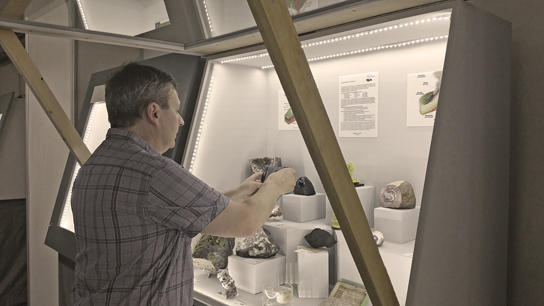
And now packing up, on Sunday evening.
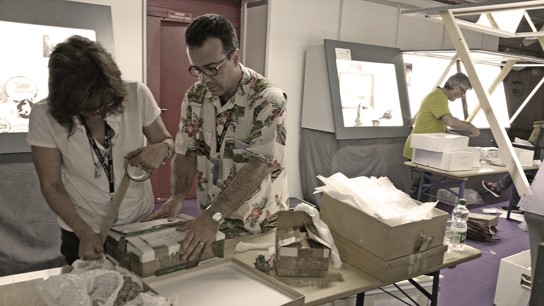
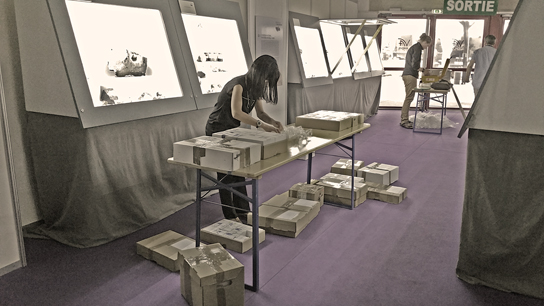
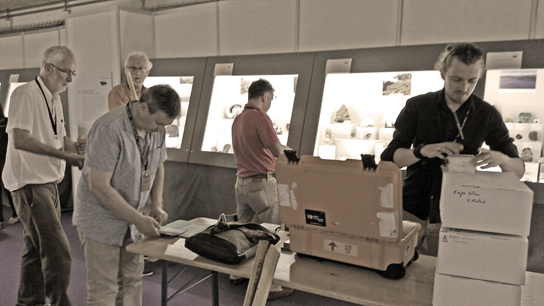
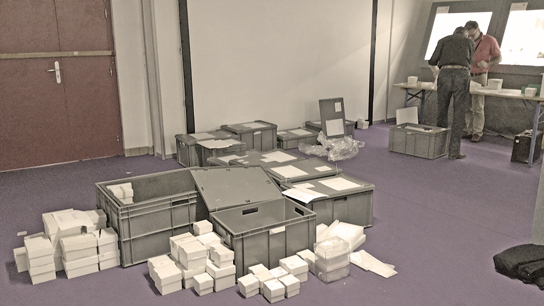
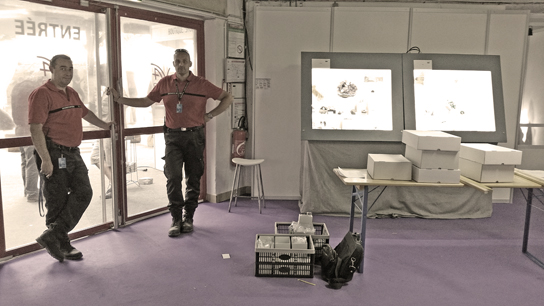
Some little streets in Sainte-Marie.
Streets in the gem area.
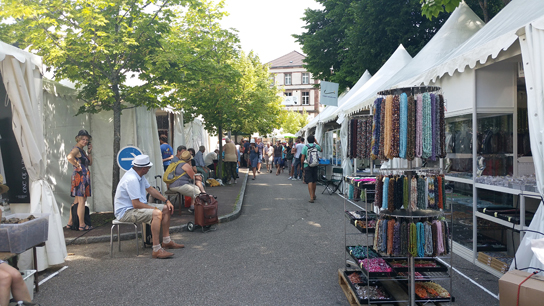
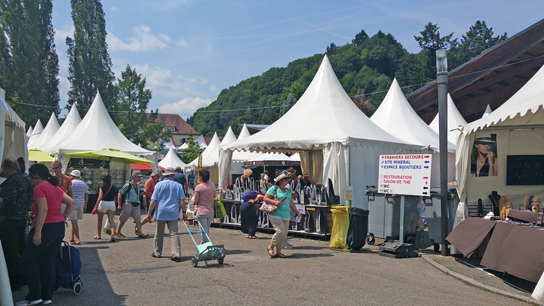
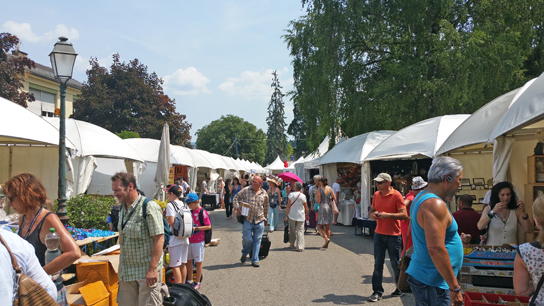
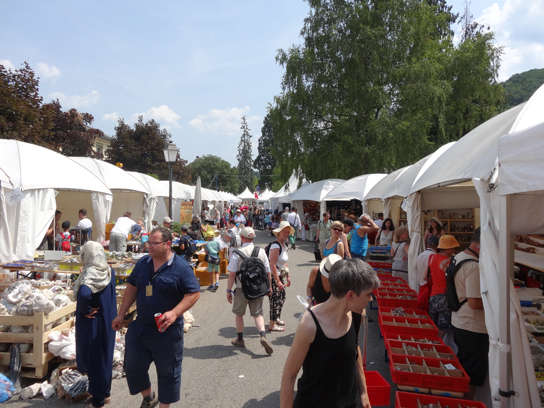
Streets in the mineral area.
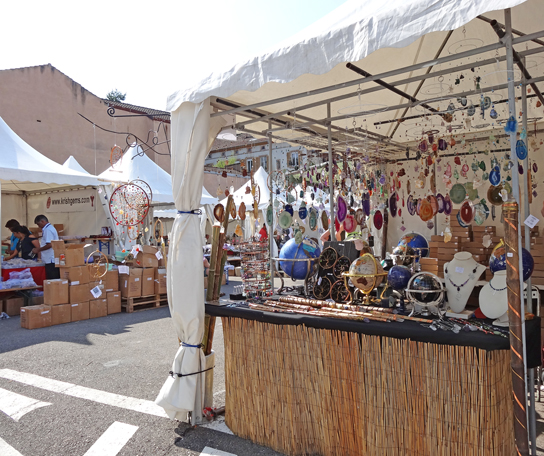
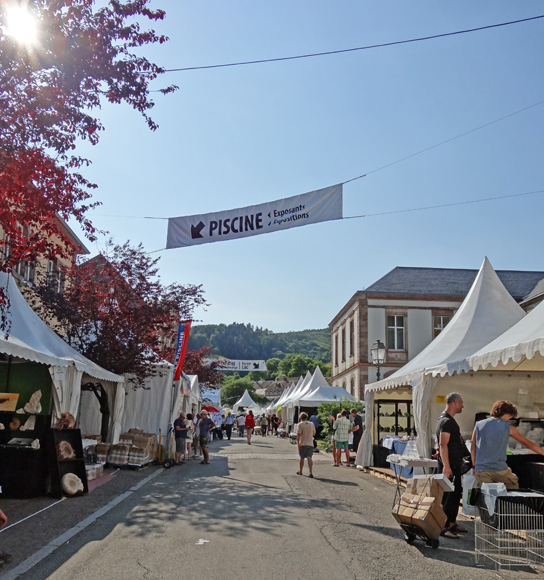
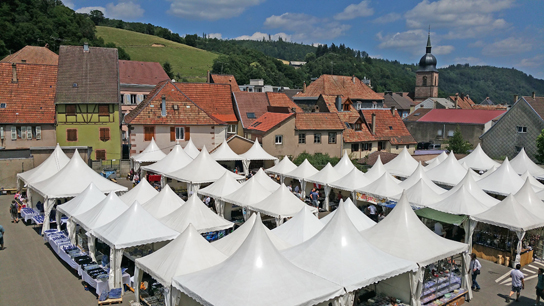
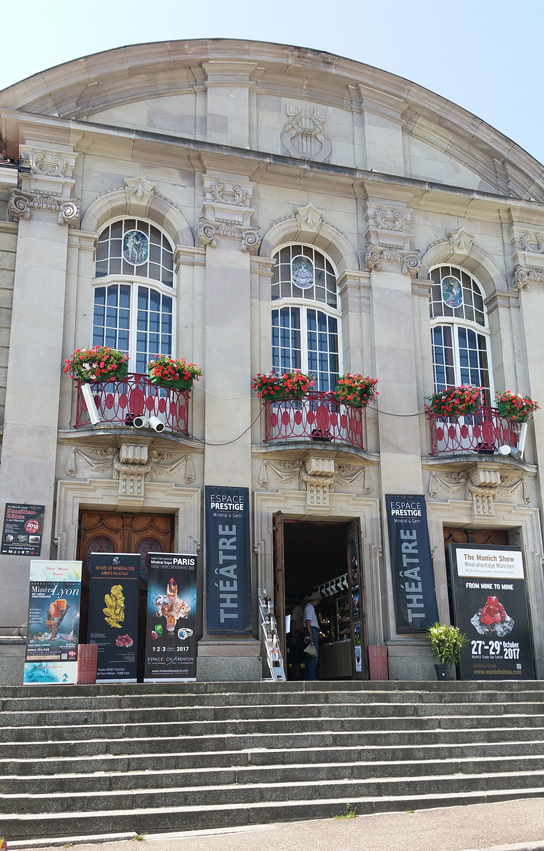
Lectures are also organized during the show. Here a few pictures taken during the Symposium on Friday June 23, 2017.
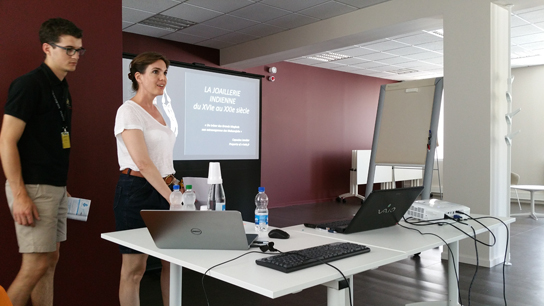
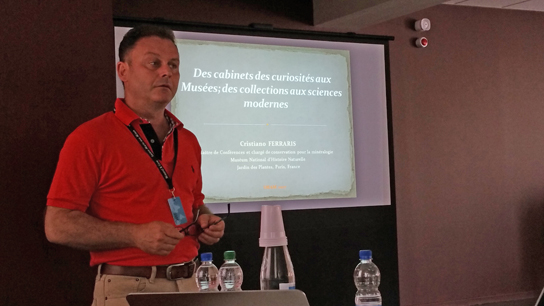
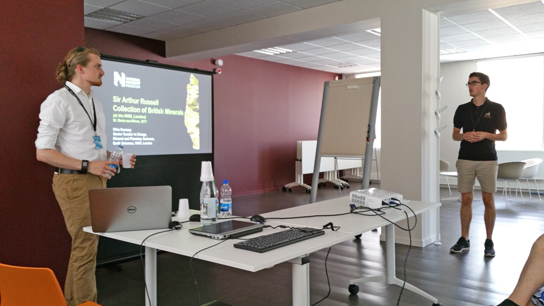
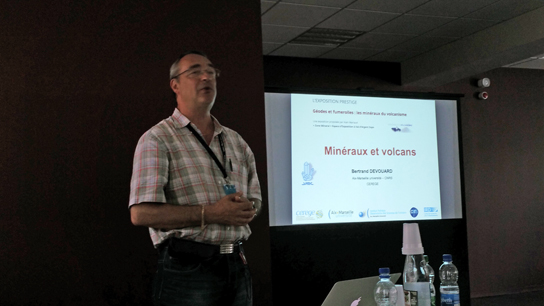
See you next year in Sainte-Marie for a new Prestige exhibit!
Any questions about the museum or the collection ? Contact us
Find all the information to come to the Mineralogy Museum here
Musée de Minéralogie
Mines Paris - PSL
60 boulevard Saint-Michel
75006 Paris
TUESDAY: 10am - 12pm and 1:30pm - 6pm.
WEDNESDAY, THURSDAY, FRIDAY: 1:30pm - 6pm
Closed on Saturdays from July 19th to August 23rd (Other Saturdays: 10am - 12:30pm and 2pm - 5pm)
Closed on Sundays, Mondays and on National Holidays
Find all our temporary exhibits and special events here
